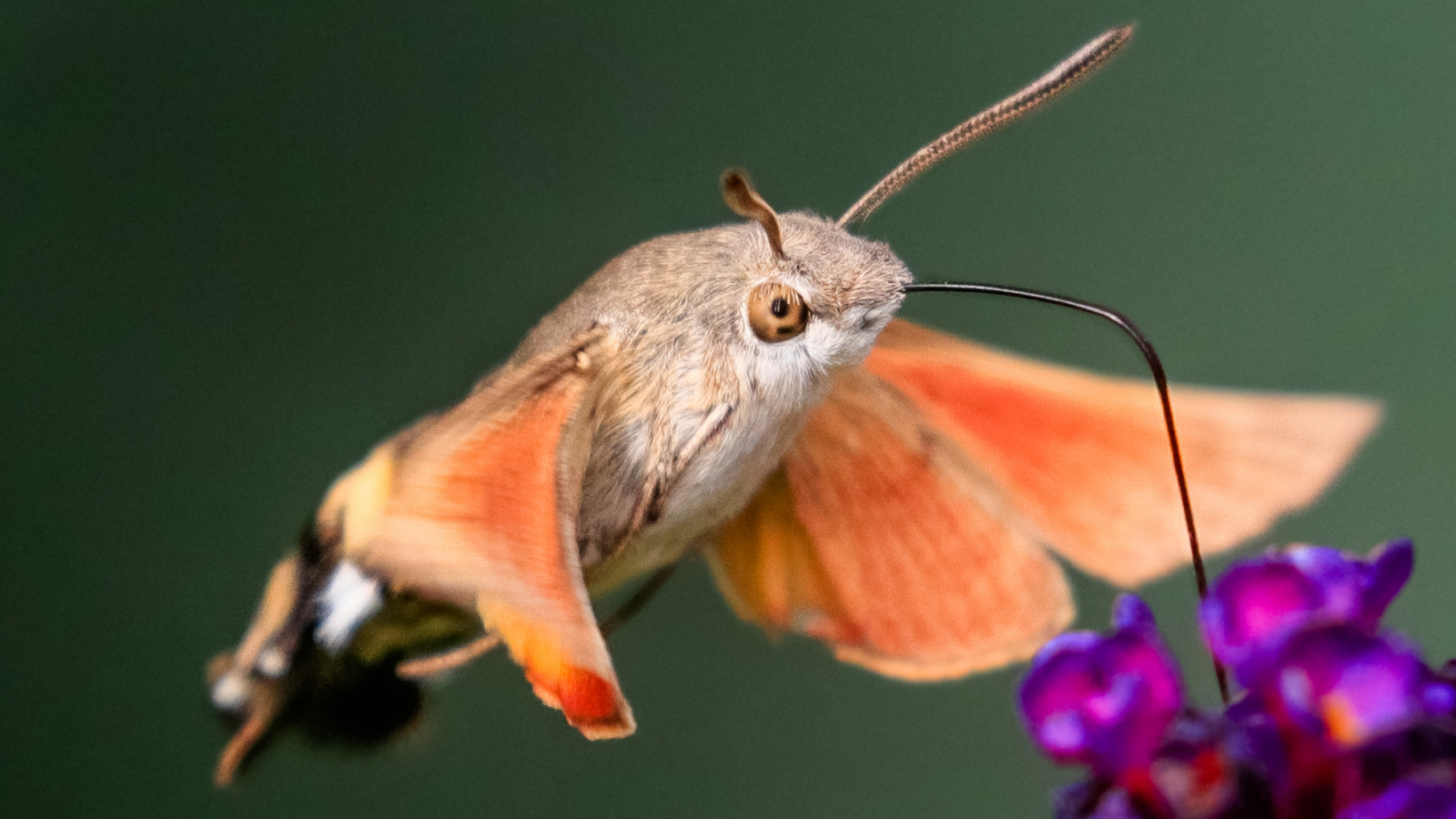

This fascinating creature looks like a hummingbird, but it’s actually a moth. (Image credit: Daniel Dunca/Shutterstock)
Name: Hummingbird hawk-moth (Macroglossum stellatarum)
Where it lives: Europe and North Africa, migrating north in summer and south in winter
What it eats: Nectar
Why it’s awesome: — It’s a bird! No, it’s a hummingbird hawk-moth! This fascinating creature looks like a hummingbird, but it’s actually a moth. It even hovers in a way reminiscent of hummingbirds, with its wings fluttering so fast they produce an audible hum — a striking example of convergent evolution.
It beats its wings around 85 times per second — more than some species of hummingbird, according to PBS Nature.
The hummingbird hawk-moth is partial to flowers with tube-shaped petals and uses its long, curled proboscis — an elongated sucking mouthpart — to extract nectar from the flower’s center. Its proboscis is almost as long as its entire body and is kept curled up when not in use.
One of the most remarkable aspects of the hummingbird hawk-moth is its vision. Unlike most insects, this moth depends on its eyes to precisely position its giant proboscis in the center of the flowers.
To imagine how difficult it is for a hummingbird hawk-moth to maneuver its large appendage, Anna Stöckl at the University of Konstanz in Germany, whose research focuses on how animals see the world, likes to imagine a human trying to move a straw sticking out of their mouth into a glass — and the straw happens to be as tall as them, she told Live Science.
Related: Rarely seen supersized moth with 10-inch wingspan found at Australian school
In a study published Jan. 29 in the journal PNAS, Stöckl and her colleagues used high-speed cameras to film hawk-moths as they hovered next to artificial flowers with different patterns on them. They realized that the hawk-moths were using continuous visual feedback to fine-tune their movements along the patterns and make sure that the proboscis reached the center of the pattern, where the nectar should be.
Visually guided reaching requires a rather sophisticated neural circuit, which is why it is more prevalent in mammals. However, hummingbird hawk-moths show that they are also able to perform this complicated behavior even with their relatively simpler nervous systems.
“Using vision to guide an appendage is really something we don’t find as much in insects. So having a potential example of an insect that guides a very unusual appendage using vision, was really exciting,” Stöckl said.





